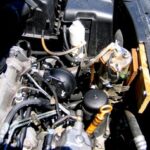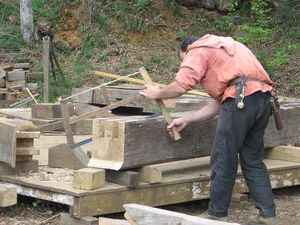Propane, or liquefied petroleum gas (LPG), is a clean-burning fossil fuel that produces fewer toxic and smog-producing air pollutants than the coal burned to produce electricity. 85% of LPG used in the U.S. comes from domestic sources. It is better for the environment, easier on the pocketbook, and lessens our reliance on foreign sources of energy.
Prices have gone up dramatically in the last year on all energy sources, including LPG. A gallon of propane that cost $1.79 last year(2007) is now $2.67(March 2008). Propane is still one of the better options available, but in these economically-trying times, wouldn’t you like to save on your energy bill? Here are some ideas to get you started.
Heating accounts for the majority of LPG use. An efficient furnace saves big money. Inspect and tune-up your system regularly. Change the filter every 30 days. In addition, annual heating bills can be cut by as much as 10% by turning the thermostat back 10-15% for 8 hours per day. Throw an extra blanket on the bed, keep it turned down at night, and realize even greater savings. Other tips:
-Check heat registers to ensure they are not blocked by furniture.
-Draw the drapes in the evening in winter; they act as insulation at your windows. Open south-facing windows during the day to use the sun’s energy.
-Protect against drafts by caulking and weather-stripping around windows, doors, and other openings such as ducts, fans and vents.
-Use kitchen, bath and other ventilating fans wisely. In just 60 minutes these fans can pull out a houseful of warmed or cooled air. Turn them off when they have done their job!
-Shut the doors to unused rooms and close the vents in these areas.
– Properly insulate attics and basements.
A clothes dryer is a propane-guzzler. Based on a current per gallon price of $2.67, with a resulting approximately 90,000 BTUs per gallon, a dryer that uses 18000 BTUs per hour will cost about 54 cents to dry a load of clothes. Best option? Dry that load outside on the clothes line and pocket the 54 cents. When using the dryer keep these ideas in mind:
-Place your dryer in a heated space. Putting it on a cold, damp floor will make the dryer work harder and less efficiently.
-Check the outside dryer vent periodically. If it doesn’t close tightly, replace it. This will prevent outside air from leaking in.
-Clean the lint filter after every load to improve air circulation.
-Separate clothes and dry like- clothes together. Lightweight synthetics, for example, dry much more quickly.
-Dry two or more loads in a row to take advantage of the dryer’s retained heat.
-Use the cool -down cycle (perma press) to allow clothes to finish drying with the residual heat in the dryer.
A water-heater can be another energy-waster. Increase its efficiency by draining a quart from the bottom every three months to remove mineral deposits and sediment. Insulate the hot water storage tank and pipes, but be careful not to cover the theromostat, the water heater’s top, bottom, or burner compartment. When in doubt, seek professional advice on this step. In addition:
-Install flow-restricting showerheads. Reduce water usage by up to 50% without affecting shower pressure.
-Run washing machines and dishwashers only when full.
-Turn water heater down from standard 120 degrees to 115 degrees. This can save 10% on a water-heating bill.
-Take showers rather than baths. Less than 10 gallons of water are used during a five minute shower while 15-25 gallons of hot water are used for a bath.
-Repair leaky faucets promptly.
When purchasing a gas oven or range, look for one with an automatic electric ignition system. Electronic ignition saves gas because a pilot light is not burning continuously. They use 40% less energy. To increase efficiency:
-Check the seal on the oven door. Gaps or tears in the seal will let heat escape.
-Be sure all burners are burning with a blue cone-shaped flame. A yellow flame indicates clogged air inlets or burners that require adjustment.
With very little time and effort, significant savings can be realized in your utility bills. That’s money in your pocket, with the satisfaction of knowing you are helping to preserve the environment.
Sources: PERC-Propane Education and Research Council, the National Propane Gas Association, www.fueleconomy.gov, the U.S. Dept. of Energy



